The Crosstab Weekly Newsletter 📊 September 2, 2018
Can Beto win? Google + Fake news. What if Hillary had gone to Wisconsin?
Welcome! I’m G. Elliott Morris, data journalist at The Economistand blogger of polls, elections, and political science. Happy Sunday! Here’s my weekly newsletter with links to what I’ve been reading and writing that puts the news in context with public opinion polls, political science, other data (some “big,” some small) and looks briefly at the week ahead. Let’s jump right in! Feedback? Drop me a line or just respond to this email.
This newsletter is made possible by supporters on Patreon. A special thanks to those who pledge the top two tiers is written in the endnotes. If you enjoy my personal newsletter and want it to continue, consider a recurring monthly donation of just $2.

This Week's Big Question
Can Beto Win the Texas Senate Race?
Briefly: Of course Beto can win. The real question is: How likely is that victory? Here’s a quick look at the data.
Beto O'Rourke (D), Congressman from Texas’ 16th congressional district, can absolutely win the upcoming Senate race in Texas. Given recent polling and fundraising data, plus qualitative indicators of a close, attention-grabbing race (like this viral video), election spectators who think the race could be close in November have a lot of evidence with which to make their case. However, I’m still skeptical about O'Rourke’s chances. I put them at about 32% today — which, for the record, is around where quantitative forecasts and betting markets place the race and much better odds than I was giving O'Rourke two months ago.
This being said, what does this calculus look like on the ground? What could cause a blue wave to crash over the Lone Star State, or keep the seat red? There are a couple of lessons to draw from political data and social science, but I’ll talk about the big one briefly here (more to come on Beto v Cruz soon):
Let’s talk about voter turnout in Texas. The statewide voting-aged population is a mixed bag, made up of 45% White, 37% Hispanic, 11% Black, and 6% Asian/other residents, according to projections from the Center for American Progress. On its face, the majority-minority status of the state indicates that Democrats, who have an edge among non-white voters, would prosper in the state. Obviously, that’s not the case. This is because the actual electorateis much redder, made up of 61% White, 21% Hispanic, 13% Black, and 5% Asian voters according again to the CAP. Notably, the share of white voters was down 2% in 2016 compared to 2012.
Okay, Texas voters are Whiter than the state as a whole. So what? Well, this also means that the electorate is more Republican than the state as a whole. Let’s run a scenario: what if all voting-aged Texans voted, and voted the same way for Rs and Ds that they did in 2016? A table:
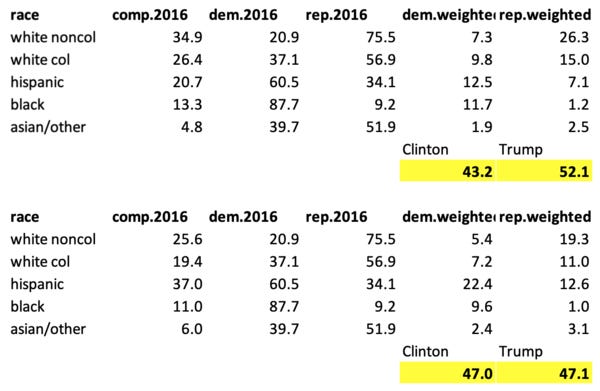
You can see that I’ve decreased the share of the electorate that is White from roughly 61% to 45% and nearly doubled the share of Hispanic voters (column comp.2016). In the highlighted yellow boxes are the findings: If all voting-aged Texas voted with the same partisan leanings as the state’s electorate alone in 2016, Donald Trump would have won the state by just 0.1 percentage points. That’s closer than his margin in Michigan. Texas would be a true swing state.
In 2018, this means that Senator Ted Cruz — who enjoyed a hypothesized 8 percentage point incumbency advantage — would be running roughly even with Rep. Beto O'Rourke, even in the current national environment where Democrats are beating Republicans by roughly 8 percentage points in the national environment.
But everyone doesn’t vote. Instead, demographics are partially destiny in determining outcomes in state elections. For the sake of the game, let’s run a proposed 2018 election where demographics look more like the 2016 electorate than the 2016 “all voters” scenario — because we have no evidence to believe that Hispanic turnout in the state is about to increase by roughly 75 percent — but decrease the share of non-college White turnout (college-educated voters are more engaged in midterm elections, but so are whites.).
For O'Rourke to run even with Cruz in November, college-educated Whites would need to make up about 33% of the electorate, non-college Whites 29%, Hispanics 21%, Black voters 13%, Asian/others 5%. This is not totally out of the questions, but you can see why I’m cautious about being bullish on Beto. Of course, these numbers are dynamic: if the partisan lean of the electorate shifts left, then the share of white voters that Cruz needs to win increases, etc.
So, if Beto O'Rourke can win, how does he? If I had to pick two things, I’d tell his staff to court white voters by bringing up new issue positions that aren’t as set in partisan lenses as others — maybe with a message emphasizing Medicare for All, which has 55% approval in Texas — all the while rallying young college-educated whites and disaffected minorities to actually show up to the polls in November.
With O'Rourke’s campaign focusing a lot of effort on a winning campaign strategy, it’s easy to see how he’s down 4 points vs Cruz in the polling average with just 65 days to go until the midterm elections. But it’s still more likely to see him coming up short than winning come election day.
The Texas Senate race is a contest to watch. The fact that I can even credibly write that means that the race is closer than it “should” be.
Evidently, POTUS thinks so, too:
I will be doing a major rally for Senator Ted Cruz in October. I’m picking the biggest stadium in Texas we can find. As you know, Ted has my complete and total Endorsement. His opponent is a disaster for Texas - weak on Second Amendment, Crime, Borders, Military, and Vets!
1:09 PM - 31 Aug 2018

Politics and Election Data
The must-read links from this week:
Googling the news - Fake views
DESPITE making heavy use of their platforms, the 45th president is no fan of America’s big tech firms. Nor is he a fan of the press. On August 28th, President Donald Trump took a swipe at both by accusing Google of rigging its search results in favour of “Fake News”.
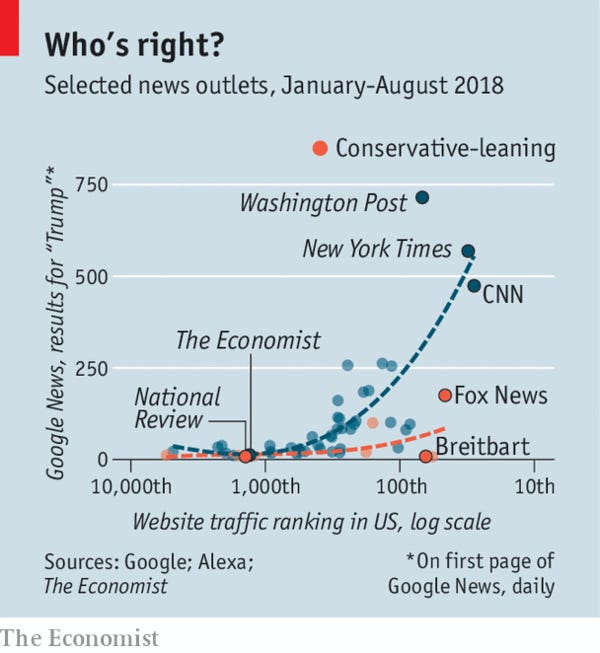
Above, my colleagues and I wrote about whether Trump’s claims that Google News is biased against conservatives have any merit.
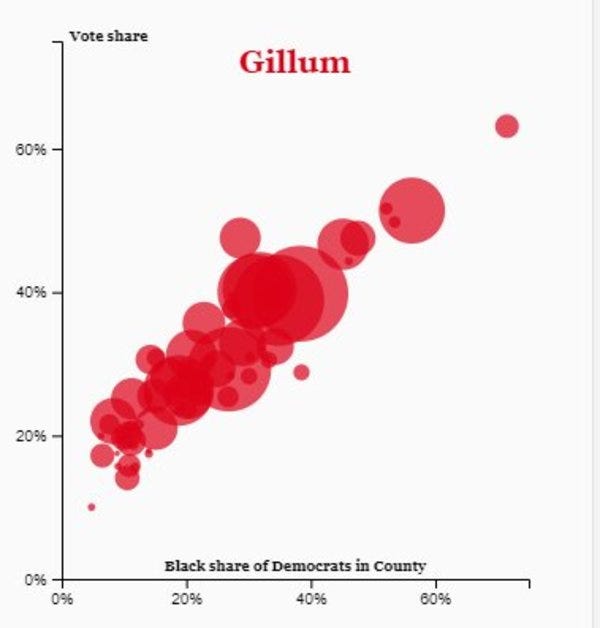
Look at Gillum compared to the rest of the candidates - it's not every day you see a correlation this clean. Black Democrats CLEARLY chose him, all across the state. Graphs and map are here: (@TB_Times) https://t.co/T4n1lbdyf4https://t.co/E3b4wAJaOp
4:00 PM - 29 Aug 2018
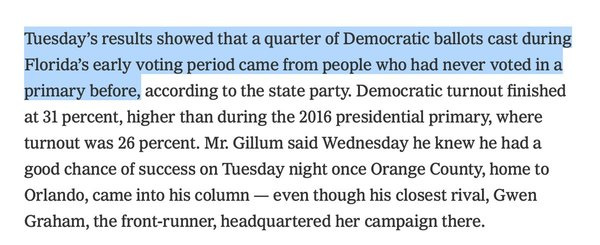
Overlooked: a quarter of Democratic ballots cast in the early vote for Florida's primary contests last week came from first-time voters (h/t @TheMidPod ) https://t.co/oJsUU5MXQR https://t.co/K1v1Z5XNf3
4:07 PM - 2 Sep 2018
Election Update: Check Out How The Forecast Works For All 435 House Races
Welcome to our Election Update for Wednesday, Aug. 29! Our 2018 House forecast is … complicated. The model considers a lot of information. And when you’re looking at what the model says about any particular district, you might wonder, “How in the hell is it coming to that conclusion?!”
How college-educated suburbanites could swing the House - Back to the suburbs
“FOR every blue-collar Democrat we lose in western Pennsylvania,” Chuck Schumer famously said in 2016, “we will pick up two moderate Republicans in the suburbs in Philadelphia. And you can repeat that in Ohio and Illinois and Wisconsin.” Hillary Clinton went on to lose three of those four states, costing her the presidency.
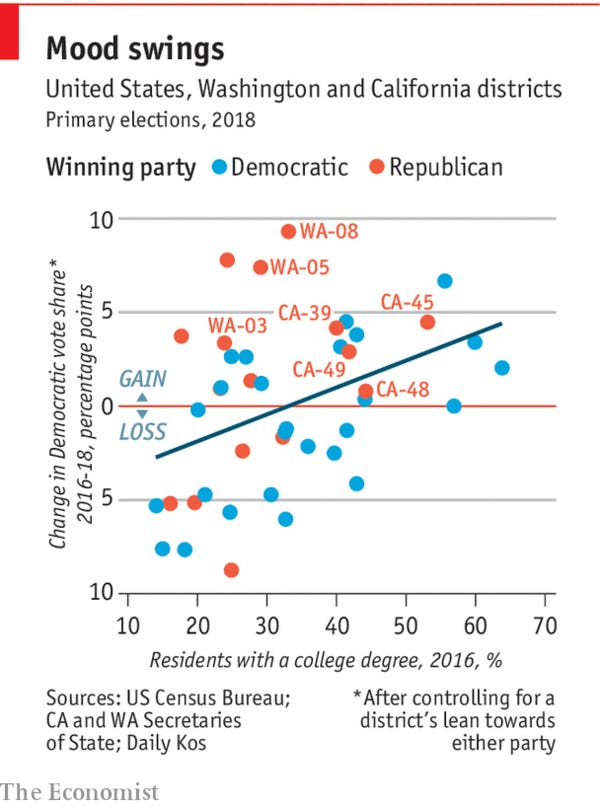
Above, from me this week. Are suburbanites going to win the House for Democrats?
Uncertain Expectations for the 2018 Midterms
You better be careful with those polls:
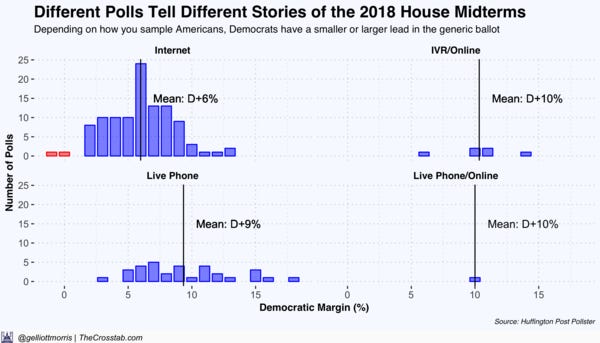
Opinion | Can Andrew Gillum Win in Florida? - The New York Times
Democrats are trying to win over red and purple America with inspiration.
Outside money floods House campaigns in 2018 midterm elections - Axios
Most of the donors to House candidates are not their constituents.
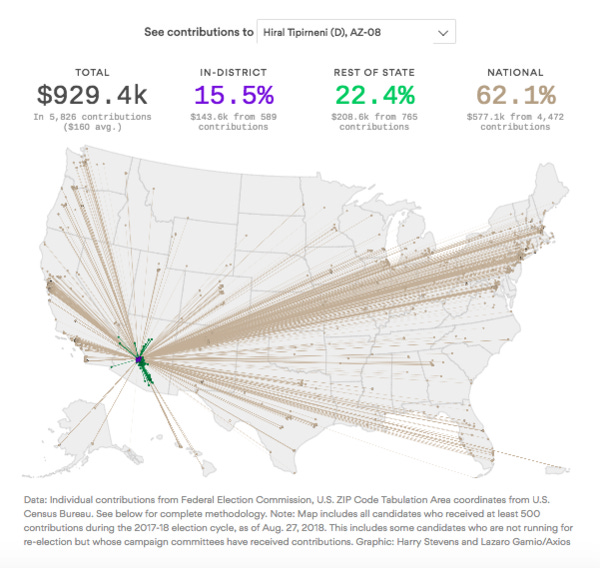
Trump country is confident and growing again - Daily chart
HOW STRONG is the American economy? It depends who you ask. Just 37% of Democrats say the economy is in good shape according to the Pew Research Centre, a think-tank. Among Republicans, the figure is twice as high.
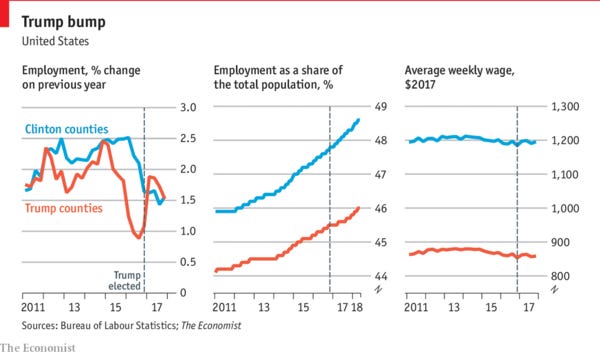
Ipsos and the UVA Center for Politics have teamed up to provide a(nother) forecasting tool for the 2018 Midterms.
www.political-atlas.com • Share
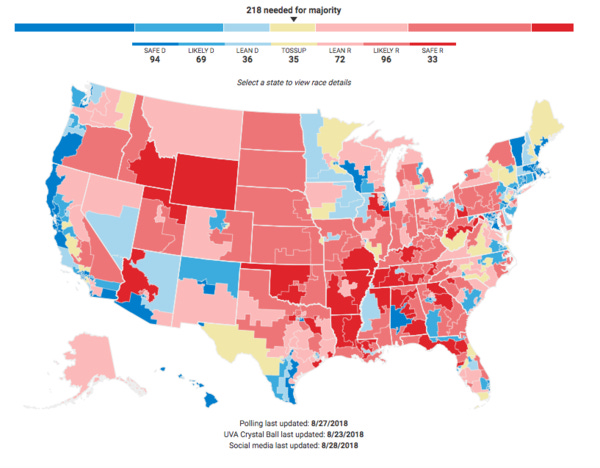
Viral Political Ads May Not Be As Persuasive As You Think | WIRED
Does more engagement mean your message is resonating with more people? For politicians campaigning on social media, focusing too much on shares and likes might be a mistake.
Gun violence has killed 6.5m people worldwide since 1990 - Daily chart
FOR more than 500 years guns have been responsible for meting out violence. A new paper published in JAMA, a medical journal, by the Institute for Health Metrics and Evaluation at the University of Washington provides perhaps the best global estimates to date of how severe that violence is.
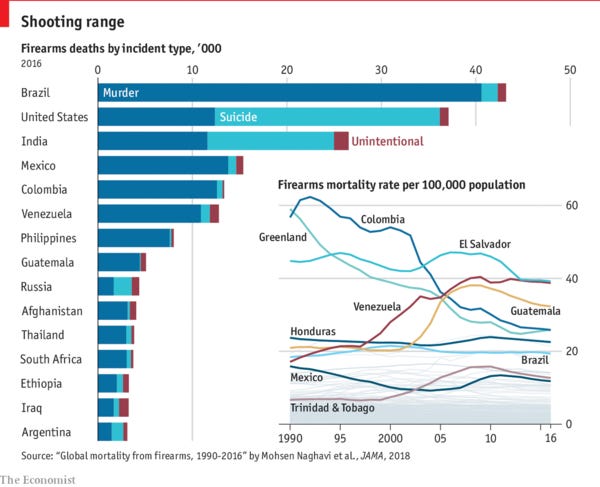

Other Data and Cool Work
Wood-burning stoves, the picturesque polluters - Daily Chart
INTERIOR-DESIGN magazines and television programmes have in recent years fuelled a fashion for wood-burning stoves. About 7.5% of homes in Britain burn wood for ambience or warmth, according to a survey in 2015. By now the share is probably higher, since about 175,000 new stoves are sold each year.


Political Science
Invisible Coattails: Presidential Approval and Gubernatorial Elections, 1994–2014 by Elliott Fullmer and Rebecca Daniel
“Accounting for the effects of state ideology, gubernatorial approval, campaign spending, state economic performance, and incumbency, we report that presidential approval has a positive and significant effect on the performance of the presidential party in gubernatorial races. The substantive effects are modest, though still potentially meaningful. In the primary specification, an additional six points of presidential approval is associated with about one additional point of gubernatorial vote share.”
What if Hillary Clinton Had Gone to Wisconsin? Presidential Campaign Visits and Vote Choice in the 2016 Election by Christopher J. Devine
In general, none of the presidential or vice presidential candidates – including Clinton – significantly influenced voting via campaign visits. However, Clinton is one of only two candidates – along with Mike Pence, in Ohio – whose campaign visits had a significant effect on voting in an individual state. Specifically, Clinton’s visits to Pennsylvania improved the Democratic ticket’s performance in that state by 1.2 percentage points. Also, there is weak evidence to suggest that Clinton might have had a similar effect on voting in Michigan. It is unclear from this evidence whether Clinton also would have gained votes, or even won, in Wisconsin had she campaigned in that state. But two conclusions are clear. First, Clinton’s visits to Democratic-leaning battleground states did not have the “backfiring” effect that her campaign reportedly feared. Second, Donald Trump did not win in Pennsylvania, Michigan, or Wisconsin as a direct result of his campaign visits to those decisive states.
The Persistent Effect of U.S. Civil Rights Protests on Political Attitudes by Soumyajit Mazumder
Using the case of the U.S. civil rights movement, I develop a theory in which protests can shift attitudes and these attitudes can persist. Data from over 150,000 survey respondents provide evidence consistent with the theory. Whites from counties that experienced historical civil rights protests are more likely to identify as Democrats and support affirmative action, and less likely to harbor racial resentment against blacks.
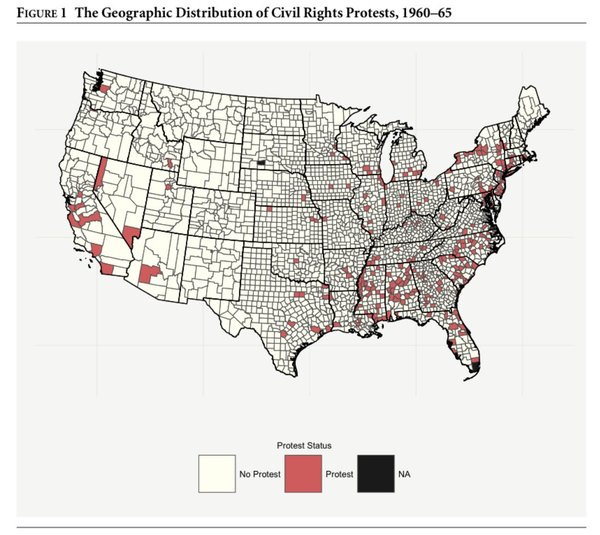
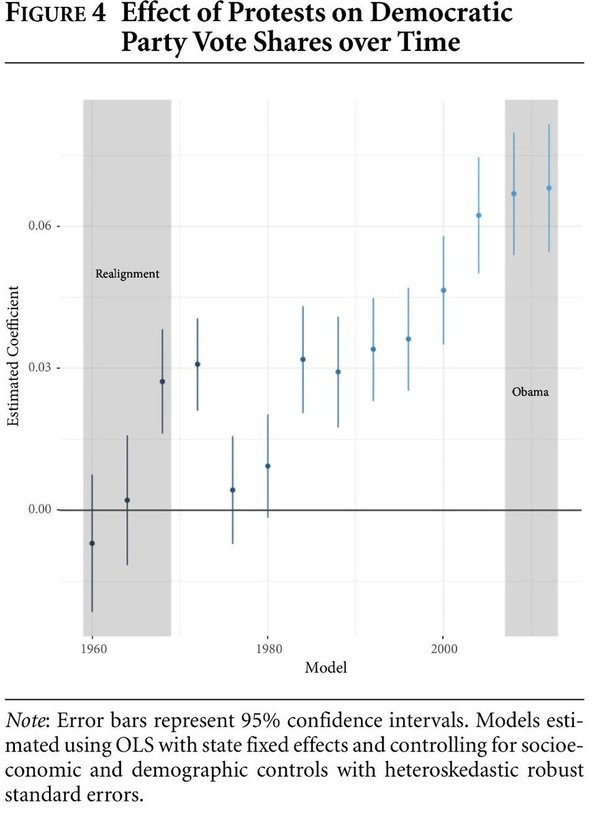
Can Trump voters be persuaded to support liberal policies? Yes, if they’re told Trump supports them. Link
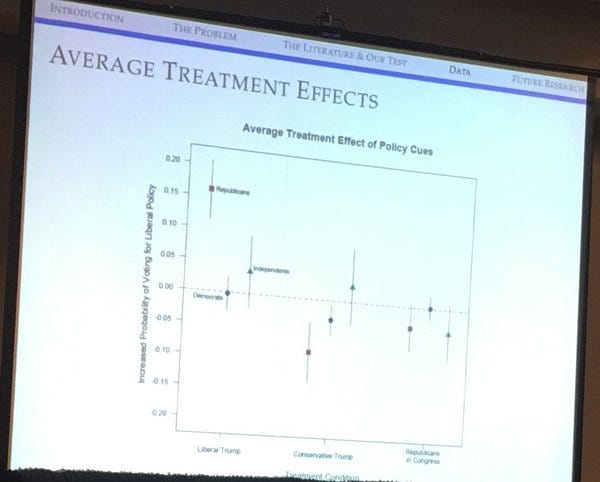

What I'm Reading and Working On
I saw a copy of The Essential Tversky at my local bookstore and promptly bought and began reading it. Speaking of how our brains work, have you checked out How to Change Your Mind: What the New Science of Psychedelics Teaches Us About Consciousness, Dying, Addiction, Depression, and Transcendence? A great read.
This week, I’m working on the final touches to our House forecasting model at The Economist and writing about the Texas Senate and Florida Gubernatorial races and how they relate to a dilemma Democrats are currently facing (I’m being intentionally vague here). Also, if you saw my tweet of a computer microphone, I’m not really working on a podcast as I meant to playfully suggest. It’s for something else. (Or is it? 😉)

Thanks!
Thanks for reading. I’ll be back again next week! In the meantime, follow me online or reach out via email. I’d love to hear from you!
A Thank-you Note to Patrons
My weekly newsletter is supported by generous patrons who give monthly to my blog, including these individuals who have pledged especially charitable contributions:
Ellen, Christopher, Robert, Robert, Mark, laura, Katy, Joshua, Joshua, Edward, Ed, David, Daniel, dan, Christina, Carol, Cameron, Calvin, Ben, Alden, and Walter
Uri, Tal, Sandeep, Nik, Mark, Malcolm, Krishan, Josh, Joseph, Jon, Hunter, Guillermo, Gail, Fred, Erik, Eric, David, Darren, Darcy, Daniel, Brett, Bob, Ben, and Andrew
Like the newsletter and want to help keep it going? Subscribe today on Patreon for access to private posts and other perks.
Corrections & other pesky mistakes
A recent version of this newsletter stated a hypothetical 0.1 percentage point Trump margin in Texas was as close as his margin in Wisconsin in 2016. He actually won by 0.7 percentage points. I’ve reworded this to say “roughly half of his margin in Michigan,” which was about 0.2 percentage points.



